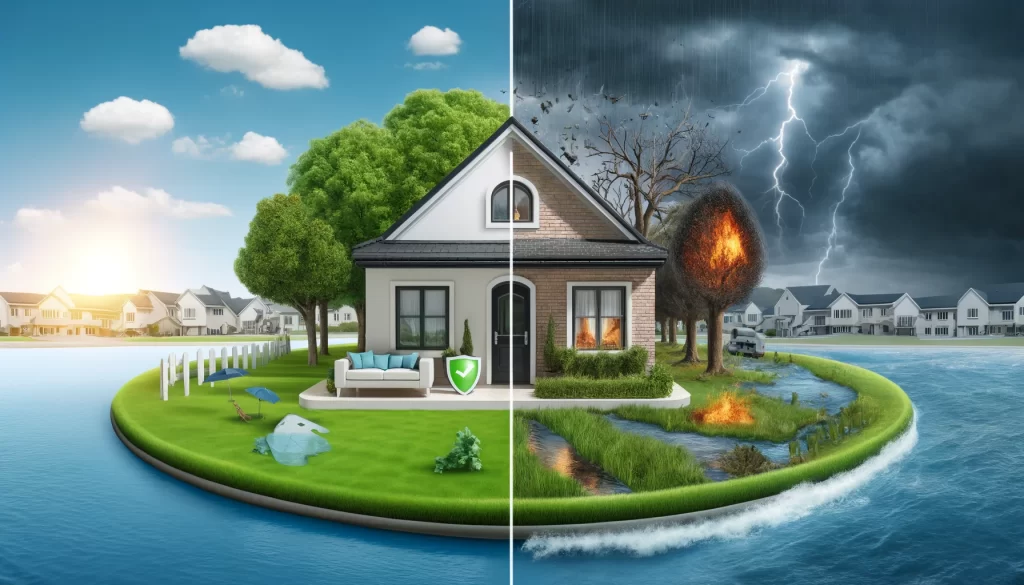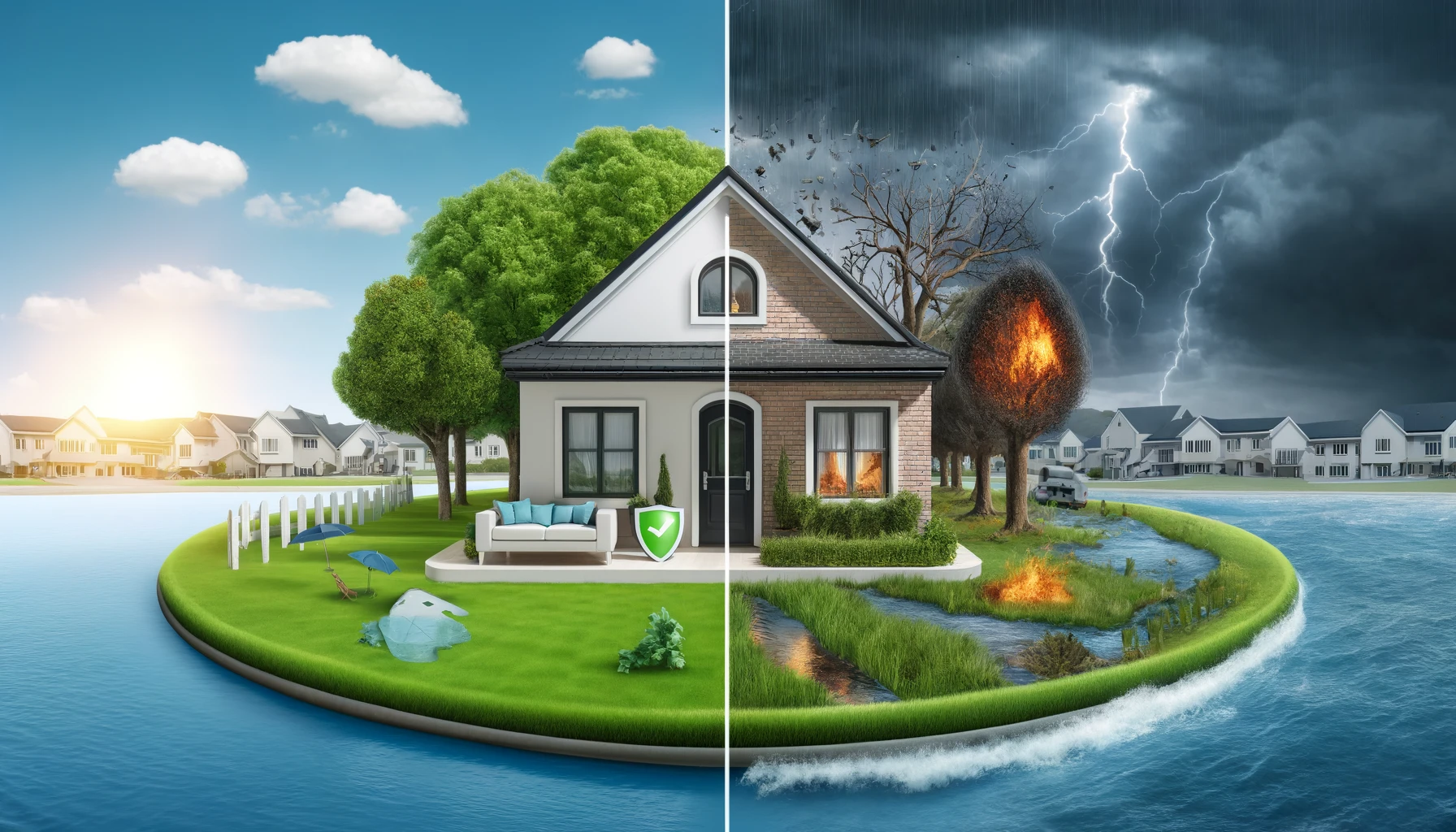In recent years, the impacts of climate change have become more evident, leading to an increase in natural disasters such as floods, hurricanes, and wildfires. As these events become more frequent and severe, homeowners and property owners are increasingly concerned about protecting their investments. This is where climate change insurance comes into play. In this comprehensive guide, we will explore what climate change insurance is, why it’s important, and how you can use it to safeguard your property. So, let’s dive in and learn how to protect your property from the unpredictable forces of nature.

- What is Climate Change Insurance?
- Understanding the Coverage
- How to Mitigate Climate Risks
- The Role of Technology in Climate Change Insurance
- Frequently Asked Questions
- What is the difference between climate change insurance and traditional home insurance?
- How much does climate change insurance cost?
- Can I add climate change insurance to my existing home insurance policy?
- What steps can I take to reduce my climate change insurance premiums?
- Is climate change insurance available everywhere?
- Conclusion
What is Climate Change Insurance?
First and foremost, let’s define climate change insurance. Essentially, it is a type of insurance policy designed to cover losses and damages caused by climate-related events. Unlike traditional insurance policies, which may not fully account for the increasing risks associated with climate change, climate change insurance specifically addresses these concerns. Consequently, it provides a more comprehensive safety net for property owners facing the growing threat of natural disasters.
Why Do You Need Climate Change Insurance?
You might be wondering why you need climate change insurance when you already have standard home insurance. The primary reason is that traditional policies often have limitations and exclusions for certain types of climate-related damages. For instance, many standard home insurance policies do not cover flood damage, which can be a significant risk in areas prone to heavy rainfall and hurricanes. By opting for climate change insurance, you ensure that you have coverage tailored to the unique challenges posed by our changing environment.
Understanding the Coverage
Next, it’s crucial to understand what climate change insurance covers. Typically, these policies include protection against:
- Floods
- Hurricanes and typhoons
- Wildfires
- Severe storms
- Drought-related damages
By having comprehensive coverage, you can rest assured that your property is protected from a wide range of climate-related threats. Furthermore, some policies may also offer additional benefits such as reimbursement for temporary housing if your home becomes uninhabitable due to a covered event.
How to Choose the Right Climate Change Insurance Policy
Choosing the right climate change insurance policy can seem daunting, but it doesn’t have to be. Here are some key factors to consider:
- Risk Assessment: Evaluate the specific climate risks in your area. Are you more prone to floods, wildfires, or hurricanes? Understanding your primary risks will help you select a policy that offers the most relevant coverage.
- Coverage Limits: Ensure the policy provides adequate coverage for your property and belongings. Check the limits and make sure they align with the value of your assets.
- Exclusions and Deductibles: Carefully review the exclusions and deductibles. Some policies might exclude certain types of damage or have high deductibles that could affect your out-of-pocket expenses.
- Premium Costs: Compare premiums from different insurers. While you want comprehensive coverage, it’s also essential to find a policy that fits within your budget.
How to Mitigate Climate Risks
In addition to purchasing climate change insurance, there are several proactive steps you can take to mitigate climate risks and protect your property.
Invest in Flood Defenses
If you live in a flood-prone area, investing in flood defenses can significantly reduce the risk of water damage. For instance, you can install sump pumps, elevate your home, and use water-resistant materials for construction. Additionally, proper landscaping can help direct water away from your property.
Fireproof Your Property
For those in wildfire-prone regions, fireproofing your property is essential. Start by creating a defensible space around your home by clearing away flammable vegetation and materials. Moreover, consider using fire-resistant building materials and installing firebreaks to prevent the spread of flames.
Strengthen Your Home Against Storms
Hurricanes and severe storms can cause extensive damage to homes. To protect your property, ensure your roof is securely fastened and consider installing storm shutters. Furthermore, reinforcing doors and windows can prevent wind and debris from causing damage.
The Role of Technology in Climate Change Insurance
Interestingly, technology is playing a significant role in enhancing climate change insurance. Insurers are now using advanced data analytics and climate modeling to assess risks more accurately and tailor policies accordingly. This means that as technology continues to evolve, climate change insurance will become even more precise and effective in providing the protection homeowners need.
Embracing Smart Home Technology
Smart home technology can also help mitigate climate risks. For example, smart sensors can detect leaks early, preventing extensive water damage. Similarly, smart thermostats can help manage energy consumption during extreme weather events, reducing the strain on your home’s systems.
Frequently Asked Questions
What is the difference between climate change insurance and traditional home insurance?
Climate change insurance specifically addresses the increased risks associated with climate change, such as floods, wildfires, and severe storms, which are often excluded or limited in traditional home insurance policies. This type of insurance provides more comprehensive coverage tailored to these unique threats.
How much does climate change insurance cost?
The cost of climate change insurance varies based on several factors, including the location of your property, the specific risks in your area, and the coverage limits of your policy. It’s essential to compare premiums from different insurers to find a policy that offers the best balance of coverage and affordability.
Can I add climate change insurance to my existing home insurance policy?
In many cases, you can add climate change insurance as a rider or endorsement to your existing home insurance policy. However, it’s crucial to discuss this with your insurance provider to understand the available options and any additional costs involved.
What steps can I take to reduce my climate change insurance premiums?
There are several measures you can take to potentially reduce your climate change insurance premiums, such as:
- Investing in mitigation measures like flood defenses or fireproofing
- Installing smart home technology to monitor and manage risks
- Choosing higher deductibles if you can afford the out-of-pocket expenses
- Bundling your climate change insurance with other insurance policies for discounts
Is climate change insurance available everywhere?
While climate change insurance is becoming more widely available, it may not be offered by all insurers or in all regions. It’s essential to research and consult with insurance providers to determine the availability and suitability of this coverage for your specific location.
Conclusion
In conclusion, climate change insurance is an essential tool for protecting your property against the increasing threats posed by our changing climate. By understanding the coverage options, choosing the right policy, and taking proactive measures to mitigate risks, you can ensure your home and belongings are safeguarded. As we continue to face the challenges of climate change, having the right insurance in place provides peace of mind and financial security. So, take the time to explore your options and invest in a policy that offers the comprehensive protection you need.
By following these guidelines and being proactive, you can effectively protect your property from the unpredictable impacts of climate change. Remember, the key is to stay informed, prepared, and insured.

JsLbMFlBcno